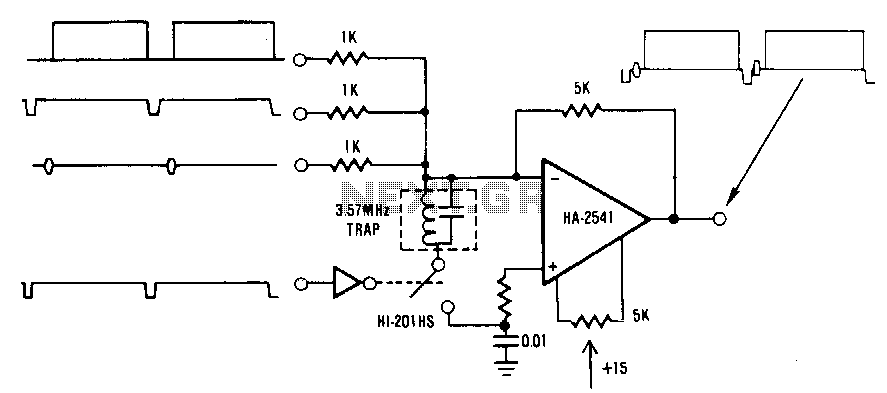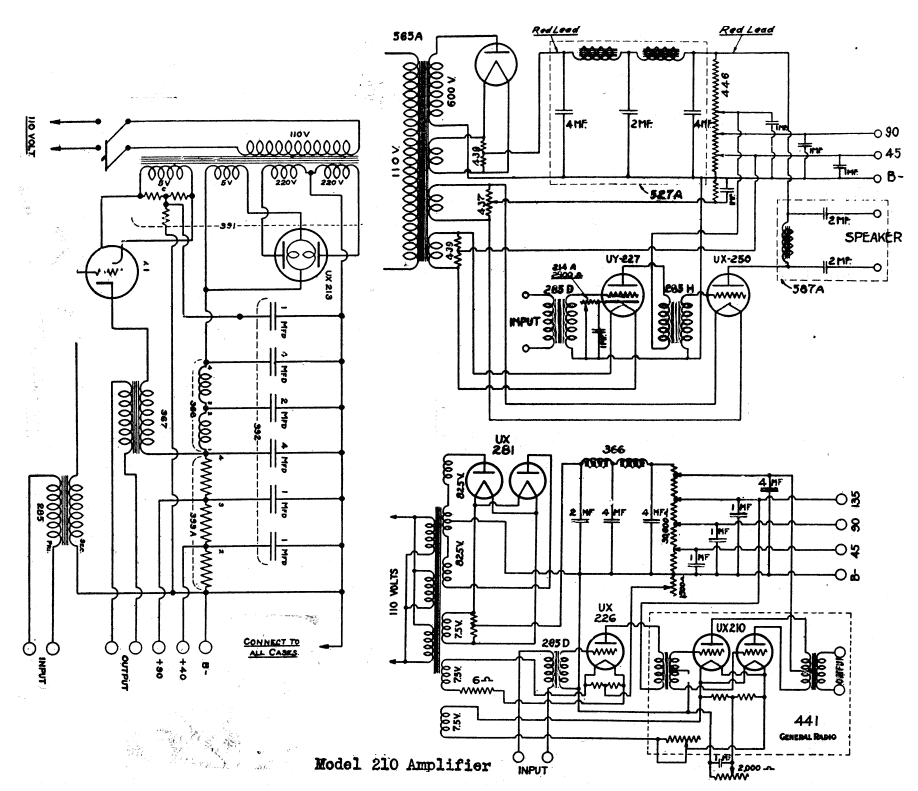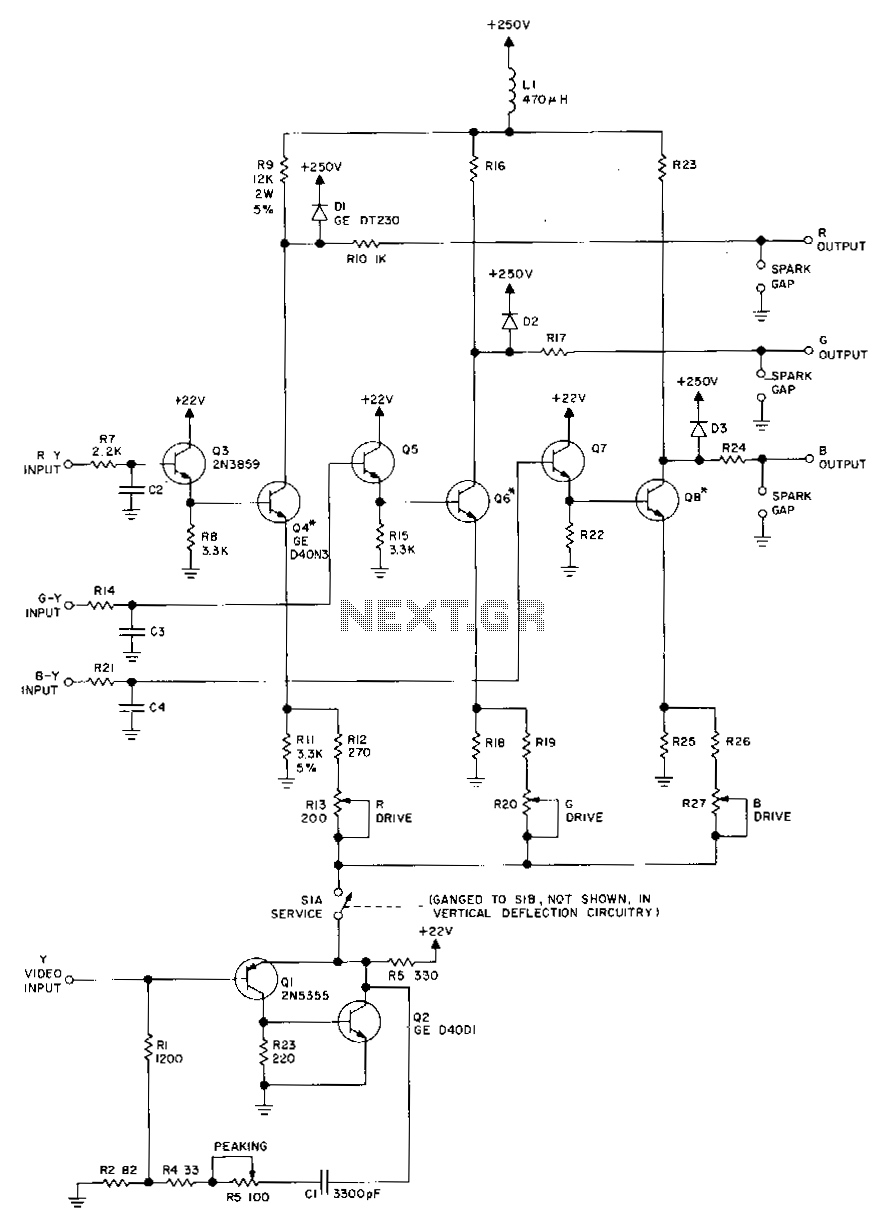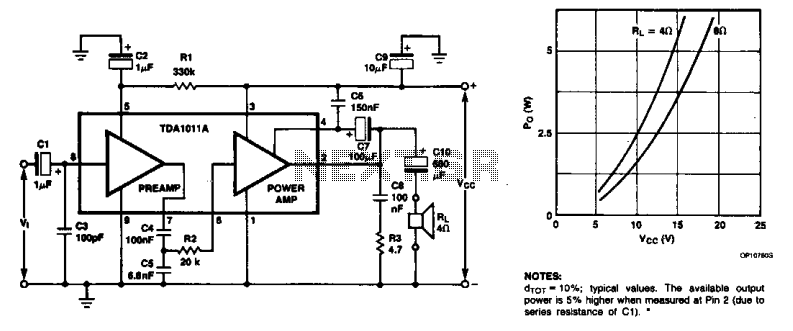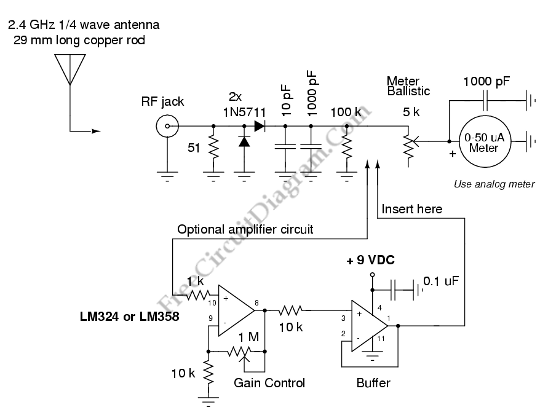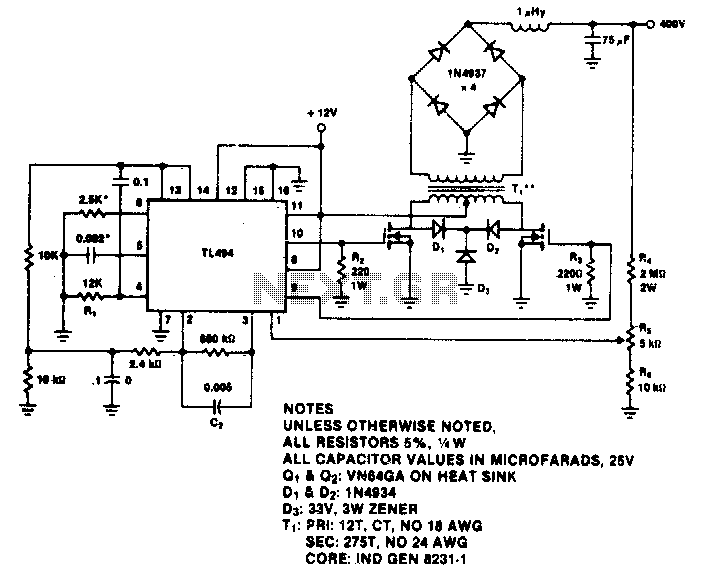
2M 144MHz Push Pull Amplifier DV28120T
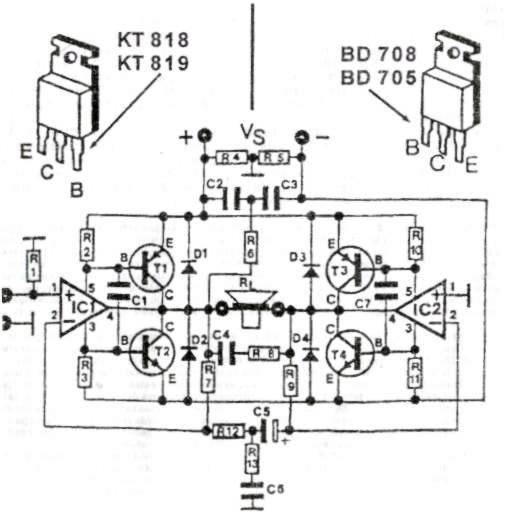
A 2-meter 144MHz push-pull amplifier capable of generating 200W, utilizing two DV28120T transistors.
The 2-meter 144MHz push-pull amplifier is designed for high-power applications, particularly in amateur radio and communication systems. The amplifier operates within the 144MHz frequency range, making it suitable for VHF communication. The push-pull configuration enhances efficiency and linearity, allowing for a significant output power of 200W.
The heart of this amplifier consists of two DV28120T transistors, which are known for their high gain and excellent thermal stability. These transistors are arranged in a push-pull configuration, where one transistor conducts during the positive half-cycle of the input signal while the other conducts during the negative half-cycle. This arrangement minimizes distortion and improves the overall performance of the amplifier.
Key components of the amplifier include the input matching network, which optimizes the signal transfer from the source to the amplifier, and the output matching network, which ensures maximum power delivery to the load. Additionally, the amplifier may incorporate feedback mechanisms to stabilize gain and reduce harmonic distortion.
Thermal management is crucial in high-power amplifiers. Adequate heat sinking and cooling methods, such as forced air cooling or liquid cooling, should be implemented to maintain the operational temperature of the DV28120T transistors within safe limits during extended use.
Power supply considerations are also essential, as the amplifier requires a stable and sufficient voltage and current supply to achieve the desired output power. Proper bypassing and decoupling capacitors should be used to filter out noise and ensure stable operation.
In summary, the 2-meter 144MHz push-pull amplifier utilizing DV28120T transistors is an efficient and powerful solution for VHF communication, with careful attention to component selection, thermal management, and power supply design being critical to its successful implementation.2 meters 144MHz push pull amplifier wich can generate 200W, how does it sound ? Sounds delicious with 2 DV28120T transistors. DV28120T push pull amplifier.. 🔗 External reference
The 2-meter 144MHz push-pull amplifier is designed for high-power applications, particularly in amateur radio and communication systems. The amplifier operates within the 144MHz frequency range, making it suitable for VHF communication. The push-pull configuration enhances efficiency and linearity, allowing for a significant output power of 200W.
The heart of this amplifier consists of two DV28120T transistors, which are known for their high gain and excellent thermal stability. These transistors are arranged in a push-pull configuration, where one transistor conducts during the positive half-cycle of the input signal while the other conducts during the negative half-cycle. This arrangement minimizes distortion and improves the overall performance of the amplifier.
Key components of the amplifier include the input matching network, which optimizes the signal transfer from the source to the amplifier, and the output matching network, which ensures maximum power delivery to the load. Additionally, the amplifier may incorporate feedback mechanisms to stabilize gain and reduce harmonic distortion.
Thermal management is crucial in high-power amplifiers. Adequate heat sinking and cooling methods, such as forced air cooling or liquid cooling, should be implemented to maintain the operational temperature of the DV28120T transistors within safe limits during extended use.
Power supply considerations are also essential, as the amplifier requires a stable and sufficient voltage and current supply to achieve the desired output power. Proper bypassing and decoupling capacitors should be used to filter out noise and ensure stable operation.
In summary, the 2-meter 144MHz push-pull amplifier utilizing DV28120T transistors is an efficient and powerful solution for VHF communication, with careful attention to component selection, thermal management, and power supply design being critical to its successful implementation.2 meters 144MHz push pull amplifier wich can generate 200W, how does it sound ? Sounds delicious with 2 DV28120T transistors. DV28120T push pull amplifier.. 🔗 External reference
Warning: include(partials/cookie-banner.php): Failed to open stream: Permission denied in /var/www/html/nextgr/view-circuit.php on line 713
Warning: include(): Failed opening 'partials/cookie-banner.php' for inclusion (include_path='.:/usr/share/php') in /var/www/html/nextgr/view-circuit.php on line 713
